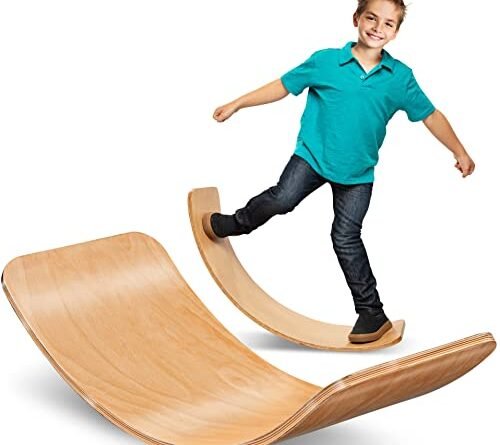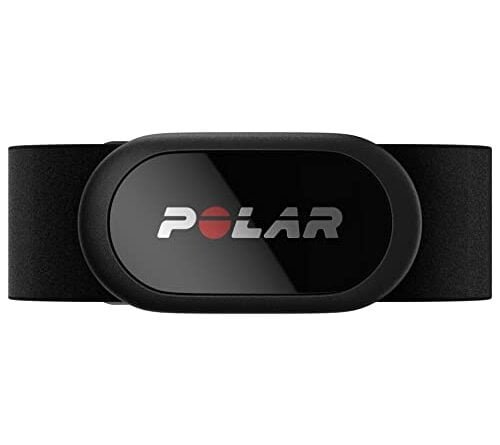
Looking to add some excitement to your workout routine? Look no further than incorporating a balance board into your exercises. This step-by-step guide will walk you through the process of incorporating a balance board into your workout routine. Whether you’re a seasoned fitness enthusiast or just starting out, this guide will help you improve your balance, build strength, and add a new dimension to your workouts. So get ready to step up your fitness game with a balance board!
Get in Shape with Top Sellers!


How can you use the StrongTek Wobble Balance Board for exercises?
Choosing the Right Balance Board
When researching different types of balance boards, start by considering your fitness goals and skill level. Assess what you want to achieve with a balance board – whether it’s improving core strength, enhancing balance and coordination, or rehabilitating an injury. This will help you determine the type of board that will best suit your needs.
Next, you’ll want to decide between a wobble board, rocker board, or a roller board. A wobble board has a round bottom and provides a unstable surface, which helps improve balance and proprioception. A rocker board, on the other hand, has a curved bottom and allows for rocking motions, helping to strengthen the ankles and improve stability. Roller boards, as the name suggests, have rollers underneath that allow for a rolling motion, engaging more muscles and challenging your balance even further.
Consider factors such as size, material, and weight capacity when choosing a balance board. The size of the board should be appropriate for your feet, allowing you to comfortably stand on it. The material of the board should be sturdy and durable, ensuring it can withstand your weight and the intensity of your workouts. Additionally, check the weight capacity of the board to ensure it can safely support you. By considering these factors, you’ll be able to choose a balance board that aligns with your needs and preferences.



Setting Up the Balance Board
When setting up the balance board, the first step is to find a suitable location with enough space for you to move around freely. Look for a flat, stable, and non-slip surface where you can place the balance board. For example, you could use an open area in your living room or a dedicated exercise space. Make sure the floor is clear of any obstacles that could hinder your movements.
Next, securely place the balance board on the chosen surface. Ensure it doesn’t wobble or slide around when you step on it. This will help you maintain balance and prevent accidents. If needed, you can adjust the difficulty level by using additional accessories like cushions or wedges. For instance, adding a cushion under the board can make it less stable and more challenging to balance on. Experiment with different accessories to find the right level of difficulty that suits your needs and skill level.
Remember, safety is important when using a balance board, so always choose a suitable location and make sure the board is secure before using it.
Mastering the Basic Stance
To master the basic stance on a balance board, start by standing barefoot on the board with your feet hip-width apart. This position will provide a stable base for you to work from. Imagine a straight line running from the top of your head down through your spine and out through your tailbone. This is your neutral spine. Engage your core muscles by gently pulling your belly button in towards your spine. This will help you maintain stability and control while on the board.
As you stand on the balance board, keep your gaze forward and your arms relaxed by your sides. Your gaze should be fixed on a point in front of you to help with your balance. Avoid looking down at your feet, as this can disrupt your equilibrium. Your arms should hang naturally by your sides, allowing for free movement and balance adjustments.
Now, it’s time to practice finding your balance. Gradually shift your weight from side to side, slowly and with control. You can start by leaning slightly to the right and then back to the center, and then lean slightly to the left and back to the center. This shifting of weight will help your body adapt to the movement of the balance board and improve your overall stability. Remember to maintain your neutral spine and engage your core throughout this exercise.
By following these instructions and practicing the basic stance on a balance board, you will gradually improve your balance, stability, and body control. So, give it a try, and have fun mastering the art of balance!
Progressive Exercises
To progress in your exercises, begin by experimenting with shifting your weight. Try moving it forward and backward, side to side, and in circular motions. This will help improve your balance and stability. Additionally, challenge yourself by performing exercises like squats, lunges, or push-ups on the balance board. These exercises will not only work on your strength, but also test your stability. Give it a go and see how it feels!
Once you feel comfortable with the basic stance, it’s time to incorporate more dynamic movements. Shift your weight in different directions, such as forward, backward, and side to side. You can even try moving in circular motions to further challenge yourself. To take it up a notch, attempt exercises like squats, lunges, or push-ups on the balance board. These exercises will not only strengthen your muscles, but also improve your stability. Give them a try and see how your body responds!
Gradual Progression
To improve your balance and stability, start by using a basic balance board. As you become more comfortable with this exercise, gradually increase the difficulty level. Try using a wobble board or a rocker board, which require more control and engage different muscles. Begin by standing on the board with both feet and maintaining your balance for 30 seconds. Once you can do this with ease, challenge yourself by lifting one foot off the board and holding the position for as long as you can. This will help strengthen your core and improve your overall balance.
In addition to using a more challenging balance board, you can also add new exercises to your routine. For example, try doing squats or lunges on the balance board to further enhance your stability and leg strength. Stand on the board with your feet shoulder-width apart, then slowly lower yourself into a squat position while maintaining your balance. Push through your heels and return to the starting position. Repeat this movement for a set number of reps or a specific amount of time. By incorporating these new exercises, you will continue to challenge yourself and prevent your progress from plateauing. Remember to listen to your body and progress at a pace that feels comfortable for you.
Wrapping it up!
In conclusion, incorporating a balance board into your workout routine can have numerous benefits. By improving your core strength, balance, coordination, and stability, you’ll not only enhance your overall fitness but also prevent injuries. So why not give it a try? Add a balance board to your workouts and enjoy the added challenge and variety it brings. Your body will thank you!
Gearing Up



Get Fit and Have Fun
Getting Started with Balance Boards
- Start by finding a flat, stable surface to place your balance board on. Make sure it’s free from any obstacles or hazards
- Begin by standing on the balance board with your feet shoulder-width apart. Use a nearby support, like a wall or a chair, to help you maintain your balance if needed
- Practice shifting your weight from side to side and front to back, gradually increasing the range of motion. This will help you get used to the feeling of the board and improve your balance
- Once you feel more comfortable, try performing basic exercises, such as squats or lunges, while standing on the balance board. This will work your leg muscles and enhance your stability
- As you progress, challenge yourself by attempting more dynamic movements like twists, turns, or even jumps on the balance board. This will further improve your coordination and core strength
- Remember, it’s important to start slow and gradually increase the difficulty of your exercises as you become more confident and experienced with the balance board. Enjoy your balance board workout!
Got questions about Balance Boards? We’ve got answers!
Can using a balance board help improve your posture?
Yes, using a balance board can help improve your posture. When you stand or perform exercises on a balance board, it challenges your core muscles to engage in order to maintain stability. This constant activation of the core muscles helps to strengthen them over time. As your core muscles become stronger, they provide better support to your spine, thus improving your posture. Additionally, using a balance board also works on your proprioception, which is your body’s awareness of its position in space. This increased awareness can further contribute to better posture and body alignment. However, it’s important to note that while using a balance board can be beneficial, it should be done correctly and in combination with other exercises and stretches that specifically target posture improvement.







